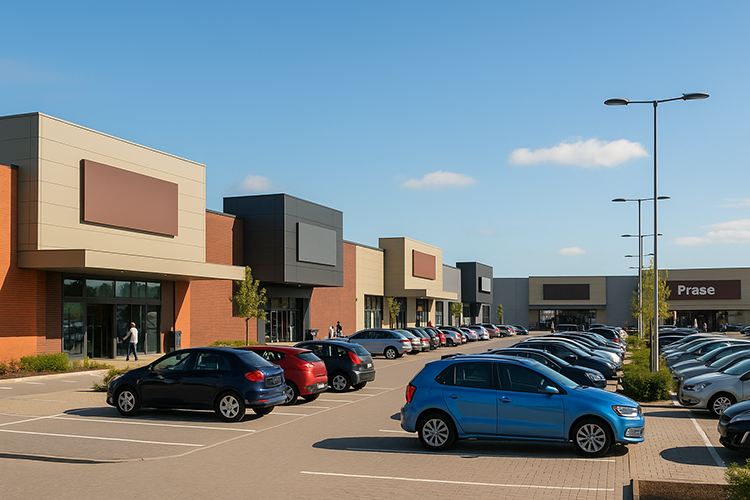Poland’s Retail Parks Strengthen Position as Leasing Models Adjust
Retail parks have emerged as the most resilient segment of Poland’s retail property market in 2025, with new projects, steady investment activity and a changing approach to lease agreements reshaping the sector.
Industry data indicate that more than 170,000 square metres of new retail space was delivered in the first half of the year, with forecasts suggesting that total completions could reach close to 400,000 square metres by December. Developers are also pressing ahead with projects that will add another half a million square metres in 2026, signalling the strongest construction pipeline the sector has seen to date.
The surge in supply has not discouraged investors. Mid-year reviews by international brokerages highlight that retail parks continue to draw capital, with yields holding in the range of seven to seven and a half percent, and prime assets in established catchments trading slightly below that. Analysts point to consistently strong tenant demand and stable occupancy as reasons for this steady pricing.
Market commentators describe retail parks as one of the most active property formats in Poland, with many investors viewing them as defensive assets in uncertain economic conditions. Reports also highlight that landlords and tenants are increasingly negotiating around how service charges and maintenance costs are handled.
A study prepared jointly by Avison Young, CMS, BIG Poland and the Polish Council of Shopping Centres notes that while the principle of tenants covering property operating costs remains intact, agreements are more frequently being adapted to include safeguards such as cost ceilings, inflation-linked fees or fixed monthly contributions. Legal experts argue that these changes, once confined to large shopping centres or key tenants, are now becoming more common across the retail park sector.
Brokers confirm that retailers are seeking greater predictability in their occupancy costs and that landlords are responding with more flexible arrangements. This reflects a broader shift in bargaining power and the growing maturity of the market.
The overall picture shows a sector that continues to expand, both in scale and sophistication. Strong construction pipelines, a healthy investment market and evolving lease practices suggest that retail parks are set to remain a cornerstone of Poland’s retail landscape in the coming years.








